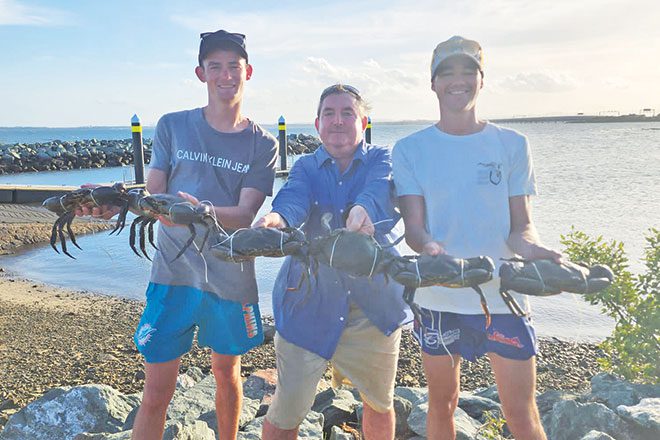The holiday season is finally over! February will see most people back to work and the kids going to school.
The boat ramps will return to normal and, hopefully, the fish and crustaceans are ready to play.
Prawns should well and truly be on the move this month.
Most of the action is up the rivers and creeks at this time of year, but that can have a lot to do with the amount of rain we receive.
At the time of writing, the water was very clean.
This should see the prawns scattered throughout systems such as the Pine and Caboolture rivers. Both of these rivers cop an absolute flogging and it’s hard to get a day when you can have a school of prawns to yourself, but there are plenty for everyone, so play nice.
Most of the holes in the upper reaches will hold prawns. It’s only a matter of sounding each bend until the better numbers are found. Though beware of snags on these bends because, after a flood, these are where fallen trees will end up being washed into.
Cast nets can be very expensive, so it’s a good idea to have a cheaper back up net if you’re prawning unfamiliar water.
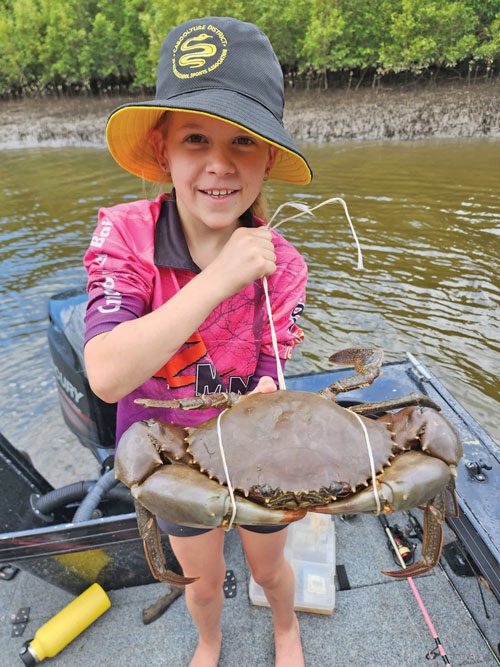
Crabs will also be on the move this month. Mud crabs are around in good numbers, however a lot of empty crabs are among them.
I expect the quality to improve during February. Fresh bait is the key to catching any crab. If you’re crabbing for a few nights, change the bait daily.
This is more important when the pots are in shallow water or if they come out of the water at low tide. The hot weather heats the water up and your bait can turn stinky quite quickly.
Mullet and chicken frames are proven bait, but any fish frames seem to work well too. Believe it or not, we have found bream to be the standout bait.
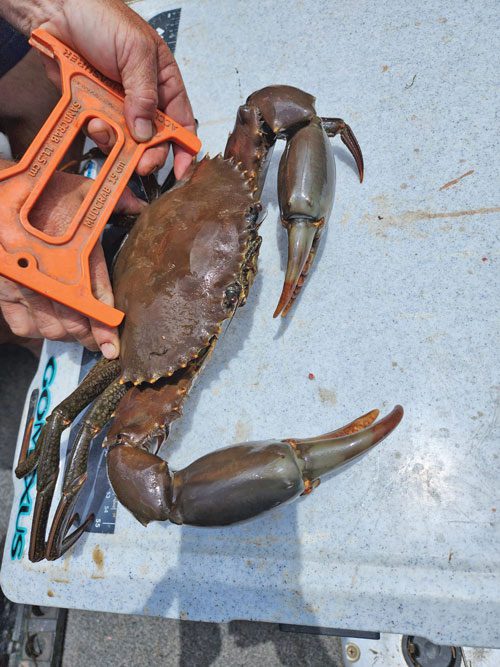
A couple of years ago, I was given a marlin frame and it worked very well. Other oily fish such as tuna and tailor are also good.
Sand crabs were everywhere over the holiday period. I’ve never put much effort into catching them, so we thought we would put a few pots in to see if we could get a few for Christmas.
Crabs were thick wherever we put them, and our Christmas sand crabs were sorted very quickly.
Plenty of flathead have been around the mouths of the rivers. Some decent sized fish in the 60cm range have been turning up too.
Paddle tail plastics have been doing the damage. I have been keeping the plastics fairly small – in the 2.5-3” range.
The larger fish have also been happy to eat these smaller plastics.
The bait around the mouths of rivers has been quite small, so these plastics are matching the bait flatties are feeding on.
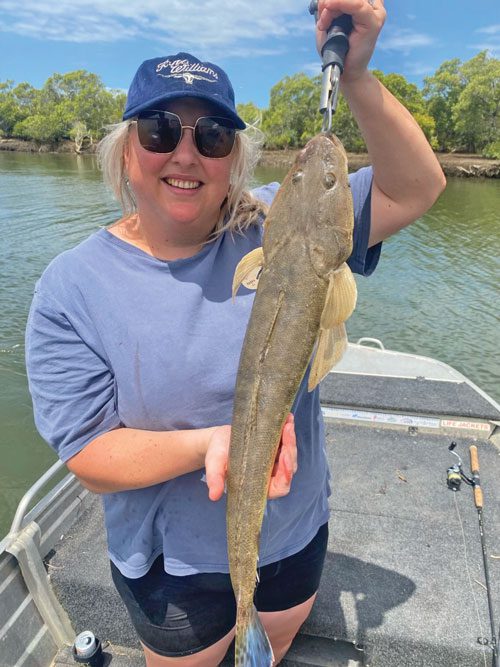
You’ll also find plenty of jelly prawns around the mangrove edges.
These are getting eaten by everything, with fish seen eating them off the surface regularly.
You won’t see too many flathead eating them off the surface, though they will definitely be down deeper, eating the prawns you can’t see.
It’s always worth a few casts around any bait you come across.
Big schools of tailor have also been showing up in the deeper water.
Some days, huge schools of them were smashing into baitfish on the surface and down deep. Most fish have been around the 40cm mark.
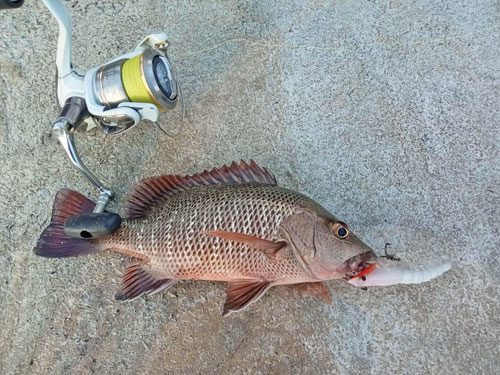
They generally aren’t too fussy with what they eat. I wouldn’t recommend casting your $20 vibe into them though.
They’re quite good at chewing plastics up… and swallowing them and biting the whole thing off!
The Brisbane River has been hit and miss. Threadfin salmon are schooled up along the wharves at the mouth and are copping a flogging.
Some anglers think it’s OK to sit on them for hours, catch a dozen of them to release straight into the path of hungry bull sharks sitting under their boats.
That’s it from me for this month. Hope you get into a few fish and crustaceans, and I might see you on the water.
 Bush ‘n Beach Fishing Magazine Location reports & tips for fishing, boating, camping, kayaking, 4WDing in Queensland and Northern NSW
Bush ‘n Beach Fishing Magazine Location reports & tips for fishing, boating, camping, kayaking, 4WDing in Queensland and Northern NSW

